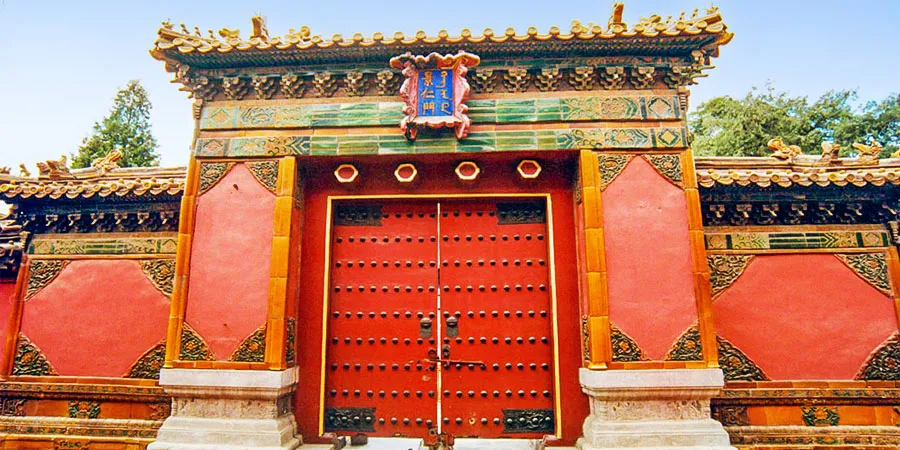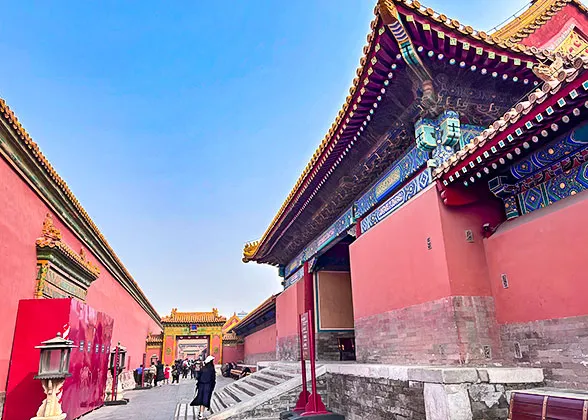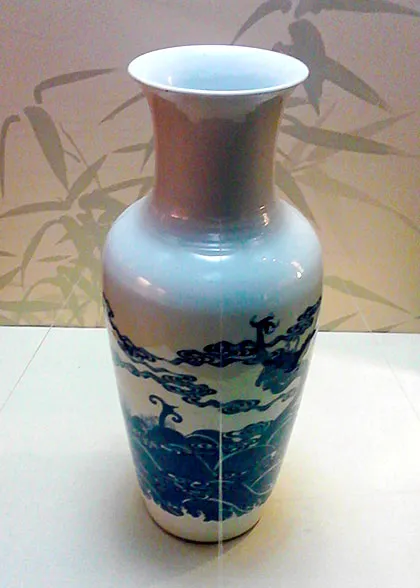Palace of Great Benevolence (Jingrengong)
The Palace of Great Benevolence, one of the six eastern palaces in the Inner Court of the Forbidden City, is exclusively for the emperor's concubines. Built in 1420, it was initially named the Palace of Eternal Peace and renamed the Palace of Great Benevolence in 1535. Today, it houses a special exhibition of donated cultural relics.
What to See about the Palace of Great Benevolence
Retaining its original layout, the Palace is a two-courtyard complex, where the Gate of Great Benevolence (Jingrenmen) serves as the entrance to the open front courtyard for greeting guests, and then the tranquil back residence yard.
Inside the entrance stands a stone screen wall, one of the few remaining architectural elements from Yuan Dynasty (1271~1368) in the Forbidden City. You will find two squatting beasts lean against the wall, facing outwards with flying manes and fierce expressions. With a single horn, sharp claws, and sturdy legs, they seem to support the screen wall with all their strength. The natural patterns on both sides are distinct, resembling clouds and mountains, akin to a Chinese ink painting.
Now, the Palace's buildings are exhibiting cultural relics donated by the public. Upon entering, visitors are immediately greeted by the Great Benevolence List, a wooden screen inscribed with the names of 682 relic donors from 1939 to 2005. The contributions total over 33,000 items, encompassing bronze vessels, calligraphy, paintings, jade artifacts, and more.
 |
| Gate of Great Benevolence |
Story of the Palace Carpet: From Royal Use to Henhouse Cushion
 |
| Six Eastern Palaces Area |
However, the carpet was lost to private hands during Puyi’s fleeing in 1945, being decayed and cut into pieces. Some parts were used as doormats, and some even ended up as padding for chicken coops. Fortunately, in 1987, some fragments were discovered by a relic researcher, and then more fragments were collected and preserved in a museum in Shenyang, a city in northeast China.
Who lived in the Palace of Great Benevolence?
Empress Hu (1402~1443), Forced to Abdicate
 |
| Exhibit of the Palace |
With this son designated as the Crown Prince, Hu was forced to abdicate and take up Taoism in the Palace of Great Benevolence. The emperor claimed she abdicated due to illness, though many knew the truth.
Tongjia (1640~1663), a Grieving and Ephemeral Empress Dowager
At just 15, Tongjia gave birth to Emperor Kangxi (1654~1722), one of the greatest Qing emperors, in the Palace of Great Benevolence. But her joy was short-lived as she was never favored by her husband and was separated from her son.
Despite her rise to prominence as Empress Dowager after Kangxi ascended the throne, Tongjia's fragile health never recovered from years of emotional and physical turmoil. She passed away tragically at the age of 23, just one year into Kangxi's reign.
Noble Consort Xi (1693~1777), the Longest-lived with Good Fortune
Noble Consort Xi, the mother of Emperor Qianlong (1711~1799), lived an affluent and long life, spanning 86 years. She gave birth to her future emperor son in 1711, and resided into the Palace of Great Benevolence after her husband’s enthronement. From 1730, she began to play a crucial role in overseeing the Inner Court.
She, ever nurturing and beloved by Emperor Qianlong, was honored by him with the highest court lady rank of Empress Dowager and was often included in imperial tours. He celebrated her birthdays with great fanfare, even donning colorful attire to dance for her.
Consort Pearl (1876~1900), Tragically Pushed into a Well
Consort Pearl, Emperor Guangxu's beloved concubine, entered the palace at 13 and resided in the Palace of Great Benevolence from 1894. Passionate about the trendy things like photography and supportive of reforms, she angered Empress Dowager Cixi (1835~1908), the conservative ruler. During the 1900 war, before fleeing westward, Cixi ordered eunuchs to drown Pearl into a well, ending her life at just 24. See more about: Well of Consort Pearl.
See more Six Eastern Palaces
- Last updated on Oct. 15, 2025 by Jally Zhang -